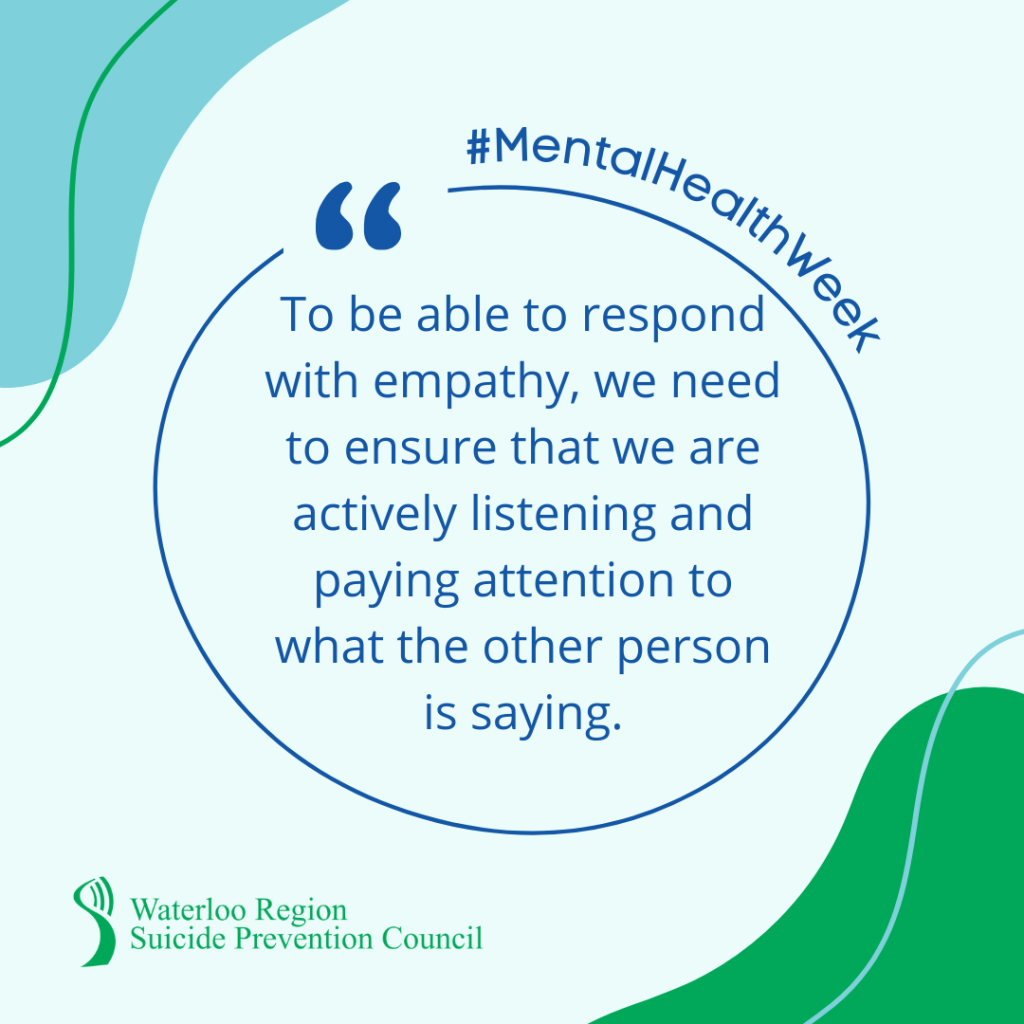This post is part of our #MentalHealthWeek series on empathy and suicide prevention. To view the entire series, click here.
Using Empathy in Conversations
Yesterday we highlighted the role that empathy plays in suicide prevention and noted that empathy connects us with the thoughts, feelings, and experiences of those who are struggling. For individuals with thoughts of suicide, this connection can make them feel understood and seen, as well as provide a sense of belonging and hope.
So, how do we incorporate empathy into our conversations?
Two ways that we can demonstrate empathy in a conversation are through active listening and responding empathetically. To be able to respond empathetically, we need to ensure we are actively listening and paying attention to what the other person is saying.

Ways to show that you are actively listening include:
- Making eye contact and nodding your head (when appropriate).
- Using simple phrases such as “I’m here for you” or “I’m listening”.
- Avoiding distractions, including answering a call or responding to a text message.
- Avoiding interrupting the person, or blurting out your own thoughts and reactions.
- Displaying open and non-defensive body language.
Ways to respond empathetically in a conversation include:
- Be curious and ask questions in a clear, non-judgmental way.
- When you ask questions, you are letting the person know that you are actively listening and want to understand.
- Check for understanding- don’t assume intentions or meanings.
- If you are unclear about something that the person said, ask for clarification. It is better to ask for clarity than make assumptions.
- Example: “What I heard you say was…” or “If I understood you correctly…”
- Don’t rush into fixing the problem or finding a solution.
- Difficult emotions can’t be “fixed” and attempting to pressure someone into problem solving or accepting advice can be harmful. As the Canadian Mental Health Association writes about difficult emotions, “We just need to be ok with them, to accept them, and to sit with our friend and their feelings as they work through a rough time.”
- Focus on validation and avoid toxic positivity and giving “tough love”.
- Providing “tough love”, such as pointing out the person’s own responsibility for their emotions or situation, can lead them to shutting down and can damage the relationship.
- Platitudes and toxic positivity, such as “everything happens for a reason” or “look on the bright side” can be harmful. Toxic positivity denies people the authentic support that they need to cope with what they are facing.
- If you don’t know what to say, that’s okay! You can respond by validating their feelings, such as:
- “I’m sorry. I know that you are sad and what you are going through is hard. I’m here for you.”
Remember that when we initiate conversations of care with someone we believe is struggling, the conversation is about them, not ourselves. Before you weigh in, tune in to what the person is actually saying or trying to tell you.
As always, you can view the resources for further learning below.
Resources for further learning:


